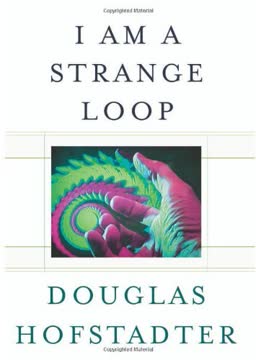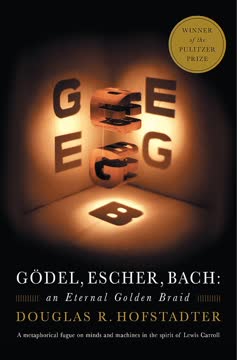Key Takeaways
1. Souls are not fixed entities but evolving patterns.
Like the score to a Chopin étude, that photograph is a soul-shard of someone departed, and it is something we should cherish as long as we live.
Souls as dynamic patterns. The book challenges the traditional view of souls as static, fixed entities, proposing instead that they are dynamic patterns that evolve over time. These patterns are not tied to a specific physical location but are rather a complex interplay of experiences, memories, and relationships.
Soul-shards. The concept of "soul-shards" suggests that fragments of a person's inner life can be found in various forms, such as photographs, music, and memories. These fragments are not merely inert objects but rather potent triggers that can reactivate aspects of a person's soul in the minds of others.
- Photographs as soul-shards
- Music as soul-shards
- Memories as soul-shards
Souls grow and change. The book argues that souls are not static but rather grow and change over time, influenced by experiences and interactions with the world. This view suggests that our sense of self is not a fixed entity but rather a constantly evolving process.
2. Consciousness arises from self-referential loops.
Perceptual looping as the germ of “I”-ness.
Self-reference as a key. The book proposes that consciousness arises from self-referential loops, where a system's perception of itself feeds back into its own processes. This looping is not merely a mechanical process but rather a dynamic interplay of symbols and meanings.
Feedback loops and “I”-ness:
- Perceptual loops as the basis of self-awareness
- The “I” as a self-stabilizing structure
- The importance of feedback in the development of consciousness
Levels of looping. The book explores various levels of looping, from simple feedback mechanisms to complex self-referential structures. It suggests that the richness of a system's self-representation is directly related to the sophistication of its feedback loops.
3. Meaning emerges from mappings and analogies.
Extra Meanings Come for Free, Thanks to You, Analogy!
Meaning as a product of mapping. The book argues that meaning is not inherent in symbols themselves but rather arises from the mappings and analogies that connect them to other concepts and experiences. This view suggests that meaning is not a fixed entity but rather a dynamic and context-dependent process.
Analogy as a bridge. Analogies serve as bridges between different levels of abstraction, allowing us to understand complex ideas by relating them to familiar concepts. The book emphasizes the importance of analogies in communication, learning, and creativity.
- Analogies as a way to understand the unfamiliar
- Metaphors as a way to convey abstract ideas
- Examples as a way to make concepts concrete
Levels of meaning. The book explores the idea that a single symbol or event can have multiple levels of meaning, depending on the context and the perspective of the observer. This multi-layered approach to meaning is central to the book's exploration of consciousness and selfhood.
4. The “I” is a powerful, self-reinforcing illusion.
In the brain model proposed here, the causal potency of an idea, or an ideal, becomes just as real as that of a molecule, a cell, or a nerve impulse.
The “I” as a construct. The book proposes that the “I” is not a fixed entity but rather a self-reinforcing illusion created by the brain. This illusion is not a deception but rather a necessary and useful construct that allows us to navigate the world and make sense of our experiences.
The “I” as a prime mover. The book explores the idea that the “I” acts as a prime mover, a central force that drives our actions and decisions. However, this view is not meant to suggest that the “I” is a separate entity but rather that it is a high-level pattern that emerges from the complex interactions of our brains.
- The “I” as a central organizing principle
- The “I” as a source of agency and intention
- The “I” as a product of self-perception
The “I” as a self-stabilizing structure. The book argues that the “I” is a self-stabilizing structure that is constantly being reinforced by our experiences and interactions with the world. This self-reinforcement makes the “I” feel real and solid, even though it is ultimately an abstract pattern.
5. We live in each other through shared experiences.
Ideas cause ideas and help evolve new ideas. They interact with each other and with other mental forces in the same brain, in neighboring brains, and, thanks to global communication, in far distant, foreign brains.
Intertwined souls. The book proposes that our souls are not isolated entities but rather are intertwined with the souls of others. This intertwining occurs through shared experiences, communication, and empathy.
Souls as distributed patterns:
- Souls are not confined to a single brain
- Souls are partially present in the minds of others
- Souls are shaped by interactions with other souls
The power of empathy. The book emphasizes the importance of empathy in the formation of our selves. By internalizing the experiences and perspectives of others, we expand our own sense of self and create a richer, more complex understanding of the world.
6. Universality allows for self-representation.
The unexpectedness of Universality.
Universal machines. The book explores the concept of universal machines, which are systems capable of simulating any other system. This concept is used to explain how brains, through their complex symbol systems, can represent themselves and the world around them.
The Gödel-Turing threshold:
- The point at which a system can represent its own structure
- The point at which a system can simulate any other system
- The point at which a system can become self-aware
The power of numbers. The book highlights the power of numbers as a universal medium for representation. Numbers can be used to encode not only mathematical concepts but also any kind of pattern or structure, including the patterns of our own thoughts and feelings.
7. Downward causality shapes our mental world.
To put it very simply, it comes down to the issue of who pushes whom around in the population of causal forces that occupy the cranium.
Levels of causality. The book explores the idea that causality operates at multiple levels, from the microscopic interactions of particles to the macroscopic patterns of our thoughts and feelings. It argues that higher-level patterns can exert a downward influence on lower-level processes.
Downward causality in the brain:
- Ideas and beliefs can influence neural activity
- Intentions can guide physical actions
- The “I” can shape the behavior of the body
The power of abstractions. The book emphasizes the importance of abstractions in shaping our mental world. Abstractions, such as concepts, categories, and symbols, are not merely passive representations but rather active forces that influence our thoughts, feelings, and actions.
8. Truth and provability are not always aligned.
Incompleteness Derives from Strength.
Gödel's incompleteness theorem. The book explores Gödel's incompleteness theorem, which demonstrates that there are inherent limitations to formal systems of logic. This theorem shows that there are truths that cannot be proven within a given system, and that this limitation is a consequence of the system's own power.
The limits of formal systems:
- No formal system can be both complete and consistent
- There are truths that cannot be proven within any formal system
- The power of a system is also its limitation
The nature of mathematical truth. The book suggests that mathematical truth is not merely a matter of formal provability but also involves a deeper understanding of the underlying patterns and structures. This view challenges the traditional notion of mathematics as a purely formal and mechanical discipline.
9. The limits of formal systems reveal the nature of thought.
The Upside-down Perceptions of Evolved Creatures.
The power of self-reference. The book explores the power of self-reference, which is the ability of a system to refer to itself. Self-reference is a key ingredient in the formation of strange loops and is also a central feature of human thought.
The limitations of formal systems:
- Formal systems cannot capture all aspects of human thought
- Formal systems are limited by their own rules and axioms
- Human thought is more flexible and creative than any formal system
The nature of human thought. The book suggests that human thought is not merely a matter of formal symbol manipulation but also involves intuition, creativity, and the ability to make connections between seemingly unrelated ideas. This view challenges the traditional notion of human thought as a purely logical and rational process.
10. The human condition is a blend of logic and mystery.
I Am Ineradicably Entrenched… …But Am I Real?
The “I” as a necessary illusion. The book concludes that the “I” is a powerful and necessary illusion that is deeply ingrained in our human experience. This illusion is not a deception but rather a fundamental aspect of our being that allows us to make sense of the world and our place in it.
The limits of understanding:
- We are limited by our own perspectives and biases
- We can never fully understand the nature of consciousness
- We must accept the mystery of our own existence
The beauty of the unknown. The book suggests that the mystery of consciousness is not something to be feared but rather something to be embraced. It is in the face of the unknown that we find the greatest inspiration and the deepest meaning.
Last updated:
FAQ
What's I Am a Strange Loop about?
- Exploration of Consciousness: The book investigates the nature of consciousness, self-awareness, and identity, proposing that our sense of "I" is a complex interplay of symbols and strange loops within our brains.
- Strange Loops Concept: Hofstadter introduces "strange loops," self-referential systems that shift between levels of abstraction, ultimately returning to the original level, crucial for understanding consciousness.
- Interconnectedness of Minds: It suggests that our identities are not isolated but intertwined with others, challenging traditional notions of individuality and proposing a shared human experience.
Why should I read I Am a Strange Loop?
- Thought-Provoking Insights: The book offers profound insights into the nature of self and consciousness, encouraging readers to reconsider their understanding of identity.
- Engaging Writing Style: Hofstadter's accessible and often humorous writing style makes complex ideas easier to grasp, using personal stories and analogies to illustrate abstract concepts.
- Interdisciplinary Approach: By blending philosophy, psychology, and mathematics, the book provides a holistic view of consciousness, appealing to readers interested in these fields.
What are the key takeaways of I Am a Strange Loop?
- Consciousness as a Loop: Hofstadter posits that consciousness is a "strange loop," where self-reference and feedback create a sense of self, challenging linear views of consciousness.
- Interdependence of Selves: Our identities are shaped by interactions with others, suggesting that we are part of a larger tapestry of consciousness rather than solitary beings.
- Illusion of the "I": The "I" is an illusion, a construct emerging from cognitive processes, leading to a deeper understanding of existence and relationships.
What are the best quotes from I Am a Strange Loop and what do they mean?
- “I am a strange loop.”: This encapsulates the book's thesis, suggesting that our sense of self arises from complex, self-referential structures, highlighting the paradox of consciousness.
- “The buck stops there — with the so-called ‘I’.”: Reflects the idea that the self is the ultimate source of agency and decision-making, emphasizing self-awareness in human behavior.
- “We believe in marbles that disintegrate when we search for them.”: Illustrates the elusive nature of consciousness and self, suggesting that defining identity makes it slip away.
How does Douglas R. Hofstadter define a "strange loop" in I Am a Strange Loop?
- Self-Referential Systems: Strange loops are systems that refer to themselves, creating feedback loops crucial for understanding consciousness and identity.
- Emergence of Consciousness: Hofstadter argues that strange loops are fundamental to consciousness, allowing complex interactions that give rise to self-awareness.
- Examples in Nature: The book provides examples in mathematics, art, and music, illustrating the pervasive nature of strange loops and their role in consciousness.
How does Hofstadter relate consciousness to physical processes in I Am a Strange Loop?
- Consciousness as Emergent: Hofstadter posits that consciousness emerges from complex physical processes in the brain, aligning with a materialistic understanding of the mind.
- Patterns Over Particles: Emphasizes that patterns of interaction among neurons, rather than individual particles, give rise to consciousness, focusing on abstract structures.
- Feedback Mechanisms: Discusses how feedback mechanisms within the brain contribute to consciousness, creating a rich tapestry of self-awareness.
What is the significance of Gödel's Incompleteness Theorem in I Am a Strange Loop?
- Foundation for Self-Reference: Gödel's theorem serves as a basis for understanding self-reference, leading to paradoxes applied to self and consciousness.
- Limits of Formal Systems: Illustrates limitations of formal systems, suggesting truths that cannot be proven, paralleling complexities of human thought.
- Strange Loops in Mathematics and Mind: Draws parallels between Gödel's constructs and strange loops in consciousness, emphasizing interconnectedness of logic and self-awareness.
How does Hofstadter address the concept of identity in I Am a Strange Loop?
- Identity as a Construct: Argues that identity is not fixed but a dynamic construct shaped by experiences and interactions, challenging traditional notions of self.
- Interconnectedness of Identities: Emphasizes that identities are intertwined with others, suggesting understanding oneself requires understanding relationships.
- Fluidity of the "I": Posits that the "I" is fluid and can change over time, encouraging embracing evolving identities rather than rigid definitions.
How does Hofstadter use personal anecdotes in I Am a Strange Loop?
- Personal Connection: Shares personal stories, including reflections on his family and the loss of his wife, to illustrate complex ideas about consciousness and identity.
- Illustrating Concepts: Uses experiences to clarify abstract concepts, making them relatable and understandable, bridging theoretical discussions and real-life implications.
- Humanizing the Narrative: Weaves personal narratives into philosophical discourse, humanizing the exploration of consciousness and inviting reflection on personal experiences.
How does I Am a Strange Loop challenge conventional views of the self?
- Rejecting the Caged-Bird Metaphor: Challenges the idea of separate, isolated entities, proposing interconnected identities influenced by others.
- Emphasizing Relational Identity: Argues that identity is relational and context-dependent, shaped by interactions and experiences with others.
- Complexity of Selfhood: Presents a complex view of selfhood, suggesting it is a dynamic, evolving construct rather than a static, singular entity.
What role do patterns play in I Am a Strange Loop?
- Patterns as Fundamental: Hofstadter posits that recognizing patterns is essential for understanding thought processes and consciousness, shaping experiences and perceptions.
- Mathematical and Cognitive Patterns: Explores how mathematical patterns relate to cognitive patterns in human thought, revealing deeper truths about the self.
- Interconnectedness of Ideas: Patterns bridge different disciplines, enriching understanding of consciousness through insights from mathematics, philosophy, and cognitive science.
How does Hofstadter address the concept of "souledness" in I Am a Strange Loop?
- Degrees of Souledness: Introduces the idea that beings possess varying degrees of "souledness," influencing consciousness and self-awareness, with humans having a richer inner life.
- Moral Implications: Raises ethical questions about treating other beings, encouraging consideration of moral implications of beliefs about consciousness.
- Personal Reflection: Reflects on personal experiences and beliefs regarding souledness, particularly in relation to the loss of his wife, adding depth to exploration of consciousness.
Review Summary
I Am a Strange Loop explores consciousness and self-awareness through analogies to Gödel's incompleteness theorem. Readers praised Hofstadter's insights and personal reflections, particularly on his wife's death. Many found the book thought-provoking, albeit verbose and repetitive. Critics argued that Hofstadter's ideas lack originality and scientific rigor, relying too heavily on analogies and personal anecdotes. Some appreciated the accessible explanation of complex concepts, while others felt the book could have been more concise. Overall, reactions were mixed, with some finding it deeply insightful and others dismissing it as self-indulgent.
Similar Books
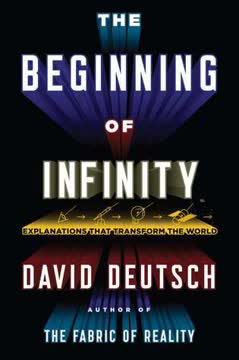

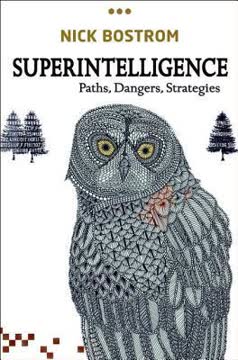



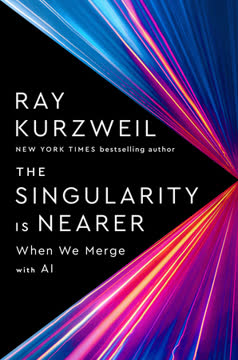
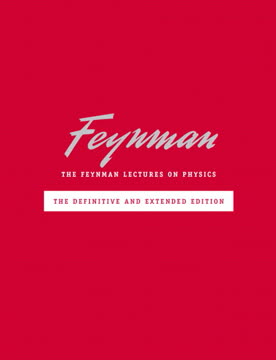
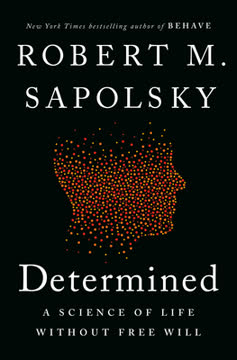
Download PDF
Download EPUB
.epub digital book format is ideal for reading ebooks on phones, tablets, and e-readers.
